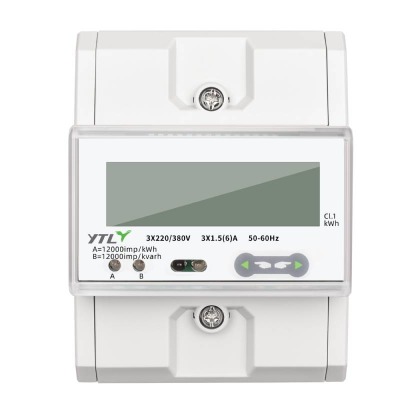
Shunt Power meter and CT energy meter are both measuring devices used for power measurement. They can measure similar data and have similar functions, but there are some differences between them.
1. Working Principle:
Shunt energy meter sample the voltage and current supplied to the user in real-time through the shunt. They then use a dedicated metering integrated circuit to calculate and process the collected voltage and current to obtain energy consumption data. On the other hand, CT energy meter measure and sample the line current using an external current transformer. They then process the collected voltage and current signals using a dedicated metering chip to obtain energy consumption data.
2. Applicable Environment:
Shunt energy meter can be used in a variety of environments such as residential areas, factories, farms, etc. While CT energy meter is typically used in industrial and commercial applications involving high currents, such as steel, chemical, and other industries.
3. Accuracy and Reliability:
The accuracy and reliability of shunt energy meter depends on the quality and precision of their adjustments. They use manganese-copper as the resistance material, which has a high conductivity and magnetic permeability, ensuring high accuracy and reliability. CT energy meter utilize external current transformers, allowing for non-contact measurements that enhance safety and reliability while providing accurate readings across a wide range of current and voltage levels.
4. Installation:
The installation of shunt energy meter is relatively simple because all that's needed is to connect the shunt in series with the load circuit, followed by connecting the energy meter on the load power side. On the other hand, CT energy meter require connecting the current transformer to the load circuit and then connecting the secondary side signal line to the energy meter, which makes the installation process relatively complex.
Shunt and CT energy meter differ in terms of their principles, applicability to different environments, accuracy and reliability, as well as the method of installation. It is crucial to choose the appropriate type of energy meter based on specific application scenarios and requirements.

 English
English 简体中文
简体中文










.png?imageView2/2/w/500/h/500/format/png/q/100)



